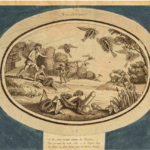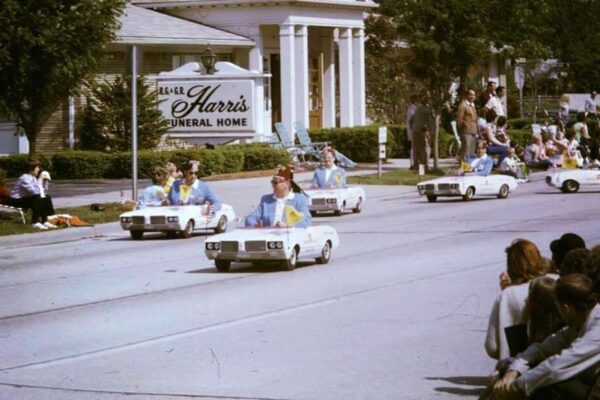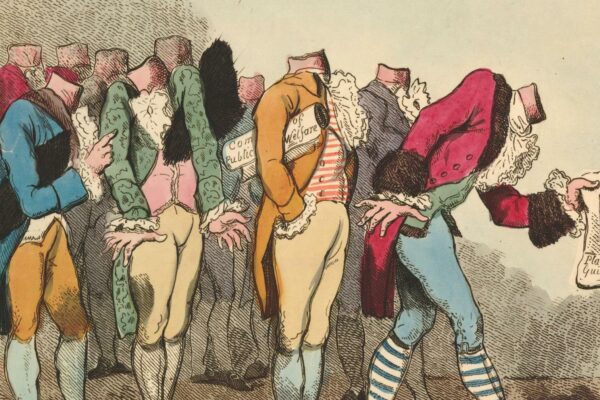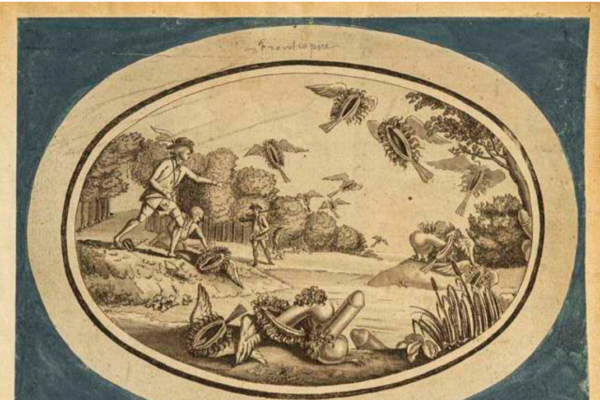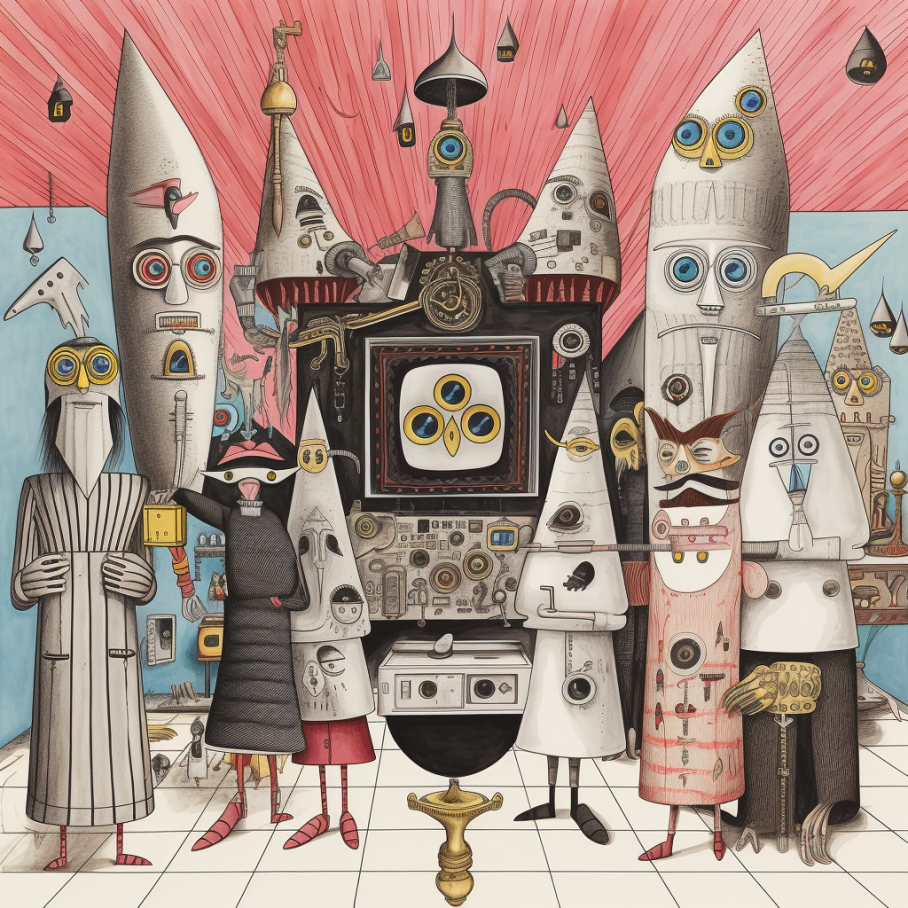
Clubs – organized groups of individuals sharing common interests or goals – have existed for centuries. The concept can be traced back to ancient times when people gathered for mutual support, sharing knowledge, and communal activities. They reflect our innate human desire for a sense of belonging, collaboration and shared experiences, but also, the allure of exclusivity, hidden knowledge and mystery within closed circles. If you’re looking to get in on a secret society, join a support group for mediocrity, or start a club of your own, we thought we’d provide a bit of inspiration. And if we look through history, it appears there has been a club for almost everything, and everyone.
Boston University’s People Watching Club
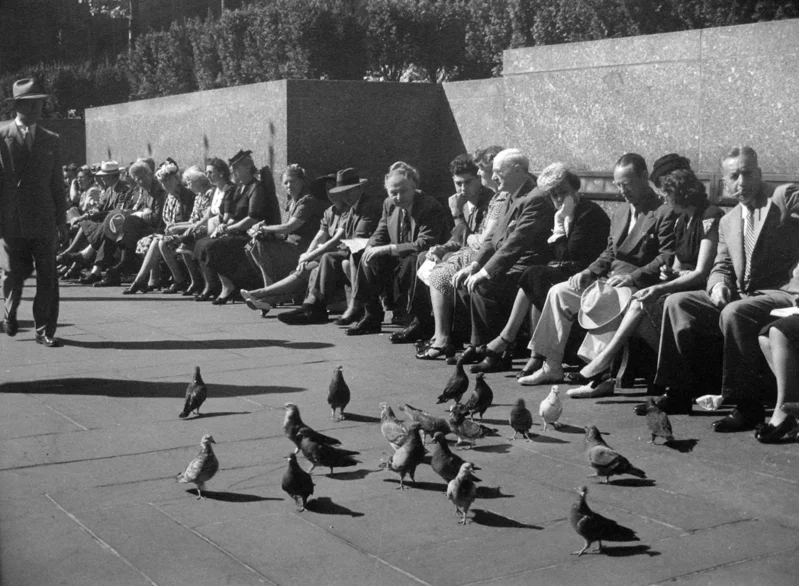
”We’re not creepy, we’re just interested”, is the mantra of the BU People Watching Club that was started in 2007 by history/social studies major, Matt Raymond. He didn’t expect it to be so popular but when 75 people showed up to the first meeting, it became clear that he wasn’t alone in his hobby. “The aim of the People Watching Club”, which meets at a different location once a week to stare at strangers, “will be to observe and analyze the people of Boston”. Members of the club meet at a different location once a week and stare at strangers. In addition to it being one of the easiest clubs to be a part of, “the cool thing is that everyone looks for different things and does it for different reasons. It is very personal,” he said. “I like to pick up on people’s mannerisms because it is amazing how different people are. We live in such a diverse world and I love admiring it.”
The Vidocq Society
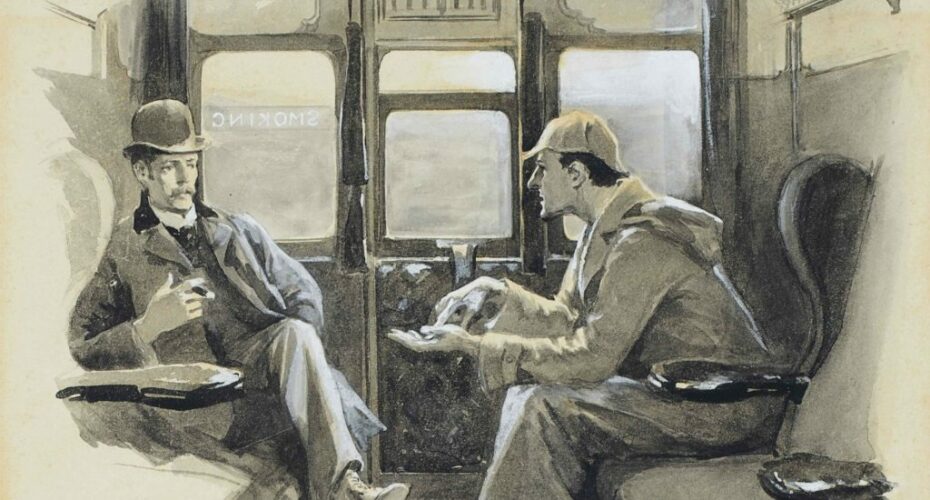
Have you ever felt like one of those murder mysteries on your podcast was something you could solve with a little extra time and evidence? The Vidocq Society is a unique organization based in Philadelphia, Pennsylvania, made up of current or retired crime experts from all fields, who meet for lunch and invite small town police officers to present cold cases for them to solve. It was founded in 1990 by three renowned forensic experts: William Fleisher, Richard Walter, and Frank Bender, who named the society after Eugène François Vidocq, a French criminal turned detective who is often considered one of the first private detectives.“Applicants for Special Membership must have attained the age of majority, be of exemplary character, possess a forensic skill or other skill necessary for the furtherance of the work of the organization and have demonstrated a commitment to solving cold case homicides.” Likened to Sherlock Holmes, these detectives are often a victim’s last chance at justice, while humbly noting, “we just give our opinion.” The society operates on a pro bono basis and does not charge for its services. They have successfully contributed to the resolution of several cold cases over the years, although due to the sensitive and ongoing nature of investigations, specifics about their involvement in solved cases are often kept confidential.
The Caterpillar Club
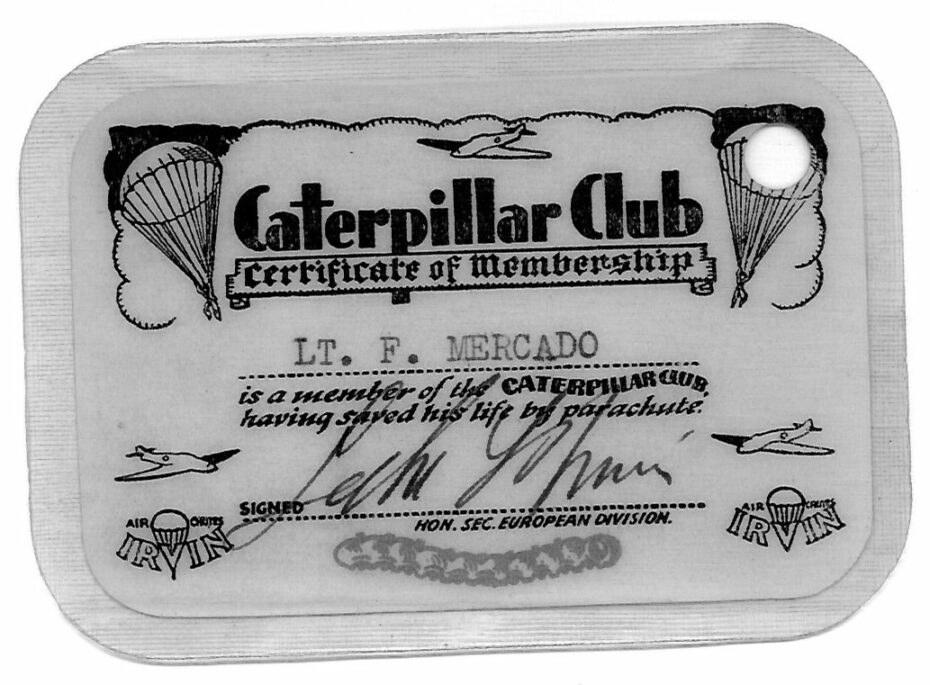
To be a member of the Caterpillar Club, all you must do is successfully parachute out of a dangerous situation. What do you get for your troubles? A shiny caterpillar pin (a symbol of the former parachutes made of silk), and a lifelong invitation of gatherings with people who lived through the same unique experience. Thousands have joined the club, most notably, Charles Lindbergh, General James Doolittle, and John Glenn (the astronaut). The main requirement is that applicants must have parachuted out of an aircraft which failed naturally, adrenaline junkies and military trainees need not apply.
The Anti-Flirt Club
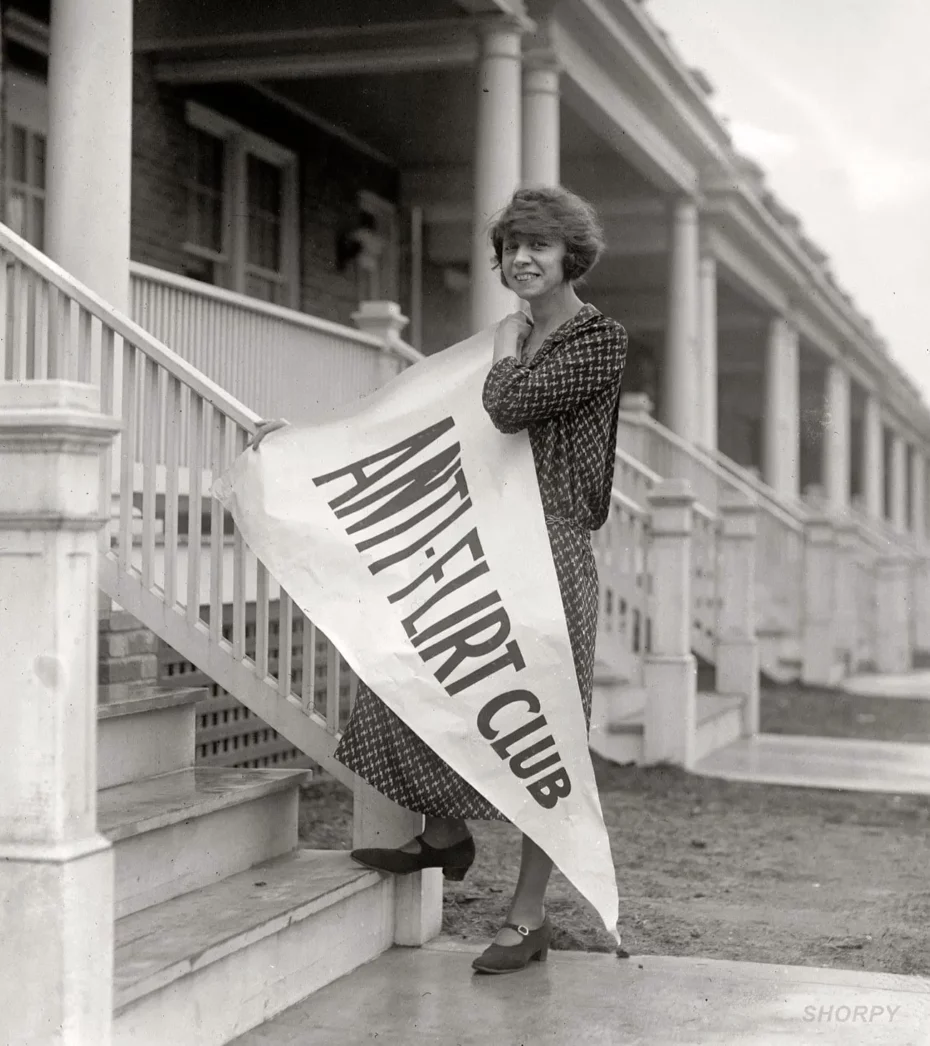
Come one, come all – just don’t flirt with anyone at all! “The Anti-Flirt Club was an American club active in Washington, D.C., during the early 1920s. The purpose of the club was to protect young women and girls who received unwelcome attention from men in automobiles and on street corners. The Anti-Flirt Club launched an “Anti-Flirt” week, which began on March 4, 1923.”
“The club had a series of rules, which were intended as sound and serious advice. These were:
Don’t flirt: those who flirt in haste oft repent in leisure.
Don’t accept rides from flirting motorists—they don’t invite you in to save you a walk.
Don’t use your eyes for ogling—they were made for worthier purposes.
Don’t go out with men you don’t know—they may be married, and you may be in for a hair-pulling match.
Don’t wink—a flutter of one eye may cause a tear in the other.
Don’t smile at flirtatious strangers—save them for people you know.
Don’t annex all the men you can get—by flirting with many, you may lose out on the one.
Don’t fall for the slick, dandified cake eater—the unpolished gold of a real man is worth more than the gloss of a lounge lizard.
Don’t let elderly men with an eye to a flirtation pat you on the shoulder and take a fatherly interest in you. Those are usually the kind who want to forget they are fathers.
Don’t ignore the man you are sure of while you flirt with another. When you return to the first one you may find him gone.”
Hollywood Vampires drinking club
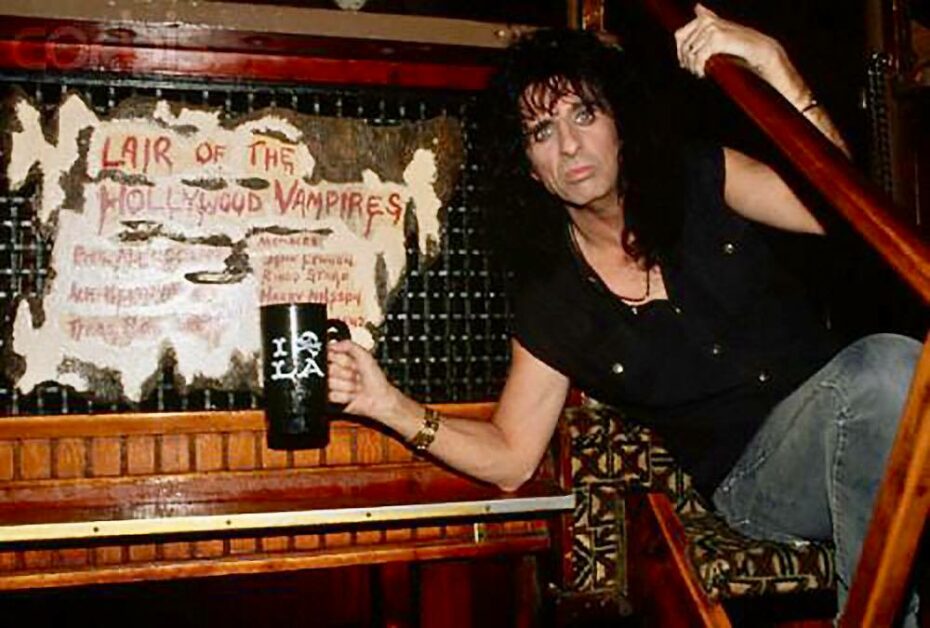
Have you ever thought you could out drink a rock star? Alice Cooper, king of rock and roll respectively, created The Hollywood Vampires Drinking Club in the 1970’s. If you could outdrink Cooper or any other members including Keith Moon, John Lennon, Iggy Pop, Brian Wilson, Ringo Star, Micky Dolenz, and Harry Nilsson, you were in. The club’s name was inspired by the idea that its members were “living dead” due to their excessive partying and drinking habits. Members would hang out at the Rainbow Bar and Grill in LA where there’s still a plaque commemorating the bygone days of alcohol induced rock and roll mania.
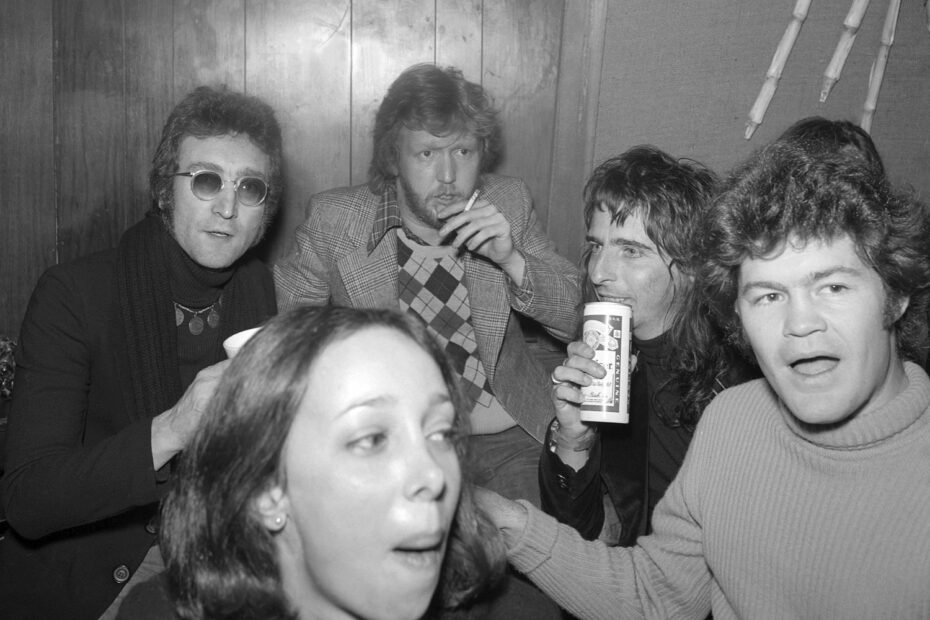
The group would honour deceased celebrities and friends by toasting to their memory, adding a sort of macabre touch to their gatherings. Some of its members eventually made efforts to get sober and leave behind their excessive lifestyles. Alice Cooper, for instance, famously became sober after battling alcoholism and now speaks openly about his experiences and the dangers of substance abuse. In recent years, the name “Hollywood Vampires” was revived by a supergroup featuring Alice Cooper, Johnny Depp, and Joe Perry (of Aerosmith fame).
The Odd Fellows
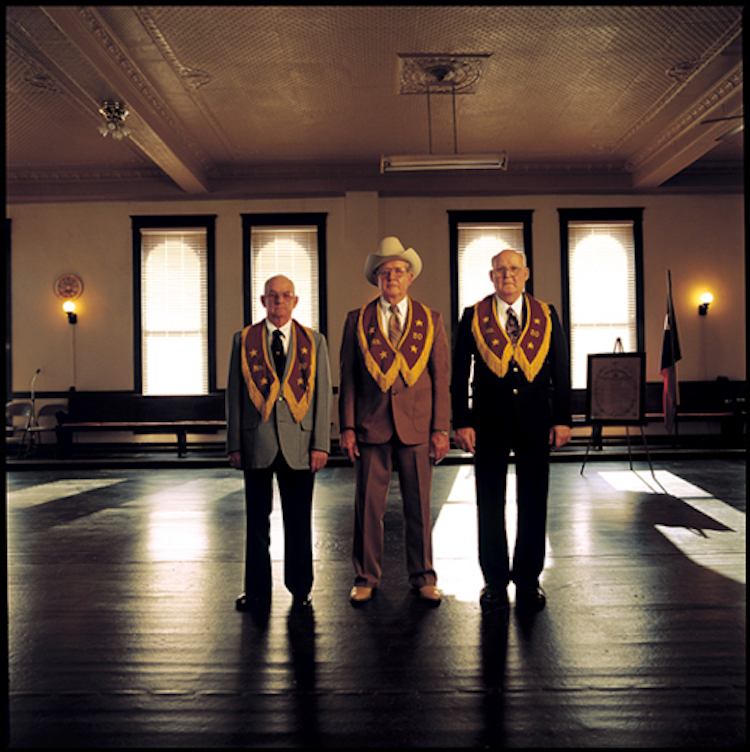
Some of history’s most notable eccentrics are counted among its past ranks: Charlie Chaplin, P.T. Barnum, Charles Lindbergh, Wyatt Earp and Al Pinkerton were all members, as well as heads of state as high up as Winston Churchill and Franklin & Eleanor Roosevelt. The Independent Order of Odd Fellows (IOOF) vehement use of esoteric symbolism and highly secretive initiation rituals (involving human skeletons) has been sending masonic conspiracy-theorists on an epic tangent for generations, and during America’s “Golden Age of Fraternalism”, grew larger than the Freemasons.
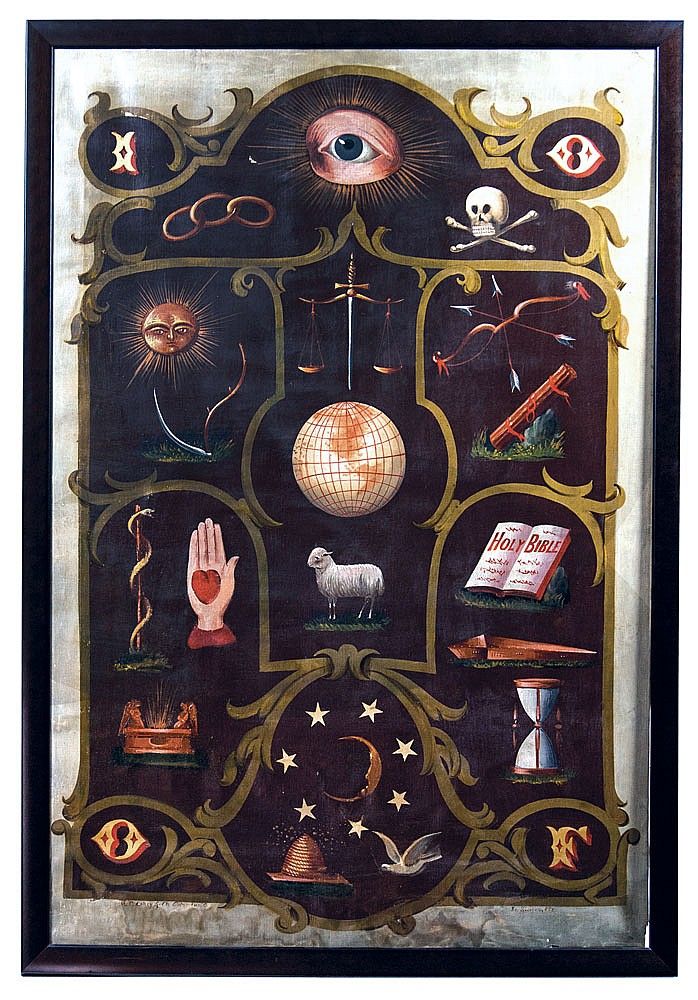
Originating in the 18th century, with roots tracing back to the United Kingdom, it is one of the oldest and largest fraternal orders, focusing on community service, charitable work, and social fellowship. For as long as records show, this has been an organisation solely aimed towards charity and helping the less fortunate, but theories propose that the order was formed by individuals who had “odd” careers or exercised unusual trades, and naturally gravitated towards each other socially and professionally, likely evolving from Medieval guilds to form an “odd fellowship”.
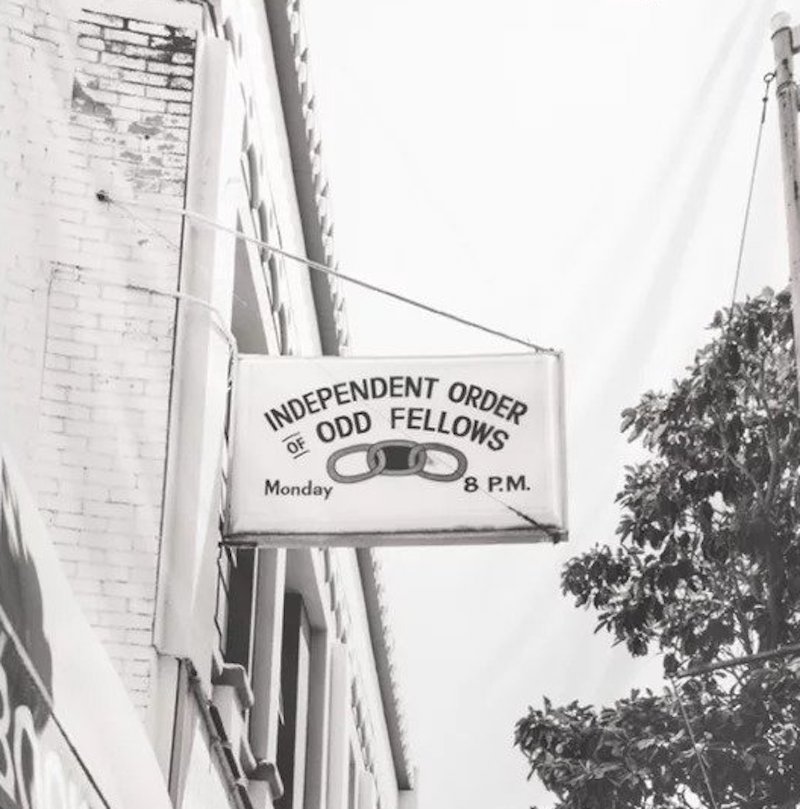
The Order of the Odd Fellows is also no stranger to the conspiracies and rumours of witchcraft and satanic worship that may or may not take place behind closed doors. Keep an eye out for the Oddfellow letters and symbols on your urban adventures.
The private dining club for repressed anger

With past members including future heads of state, mayors, maharajas, and monarchs, the Bullingdon club is best-known for booking restaurants under assumed names, then trashing and vandalising them, and simply paying for the damages in cash. The exclusive, highly-secretive and somewhat notorious all-male dining club at the University of Oxford in England was originally formed in 1870 as a group for gentlemen to enjoy polo and fox hunting. It is known for its wealthy, aristocratic, and often privileged membership, composed of students from wealthy and influential families. The club was founded in the late 18th century, with its exact origins a bit murky, but it gained prominence in the 19th century. The club is infamous for its lavish and extravagant parties, dinners, and high society gatherings, often held in private venues where members would dress in formal wear, including tailored suits, and adhere to strict codes of conduct. Notable former members of the Bullingdon Club include several British politicians, among them former Prime Ministers David Cameron and Boris Johnson. Over time, the club has faced criticism for its elitism, exclusivity, and the perceived sense of entitlement associated with its members. Despite this, the Bullingdon Club has maintained its secretive nature and continues to exist as a symbol of privilege and excess within the context of Oxford University’s social scene.
The Paris Rejects Club
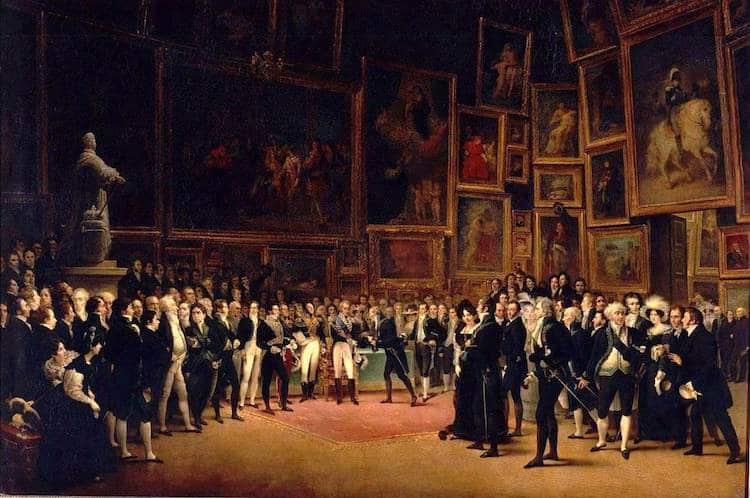
Even some of the greatest names in art history- Paul Cézanne, Édouard Manet, Camille Pissarro and James Whistler- were once rejected by the art world. In 1863, the “Salon of Painting and Sculpture” had been going for almost two centuries. Held annually at the Louvre, the show presented the work of promising young graduates from the Academy of Fine Arts and had the power to make or break careers. The royally sanctioned Salon defined the French aesthetic and even brought about the genre of art criticism. Yet it was constrained by bureaucracy and the traditional tastes of its jurors, ultimately failing to embrace avant-garde painting and recognise the emergence of a little movement called Impressionism. (Just a minor oversight). They refused Édouard Manet’s Déjeuner sur l’herbe, today a famous and studied painting. If you’re feeling down and out about your work, don’t forget that some of the greatest artistic masters in history were laughed out of the room and welcomed into the The Paris Rejects Club (Salon des Refusés), a groundbreaking art collective that laid the foundation for modern art.
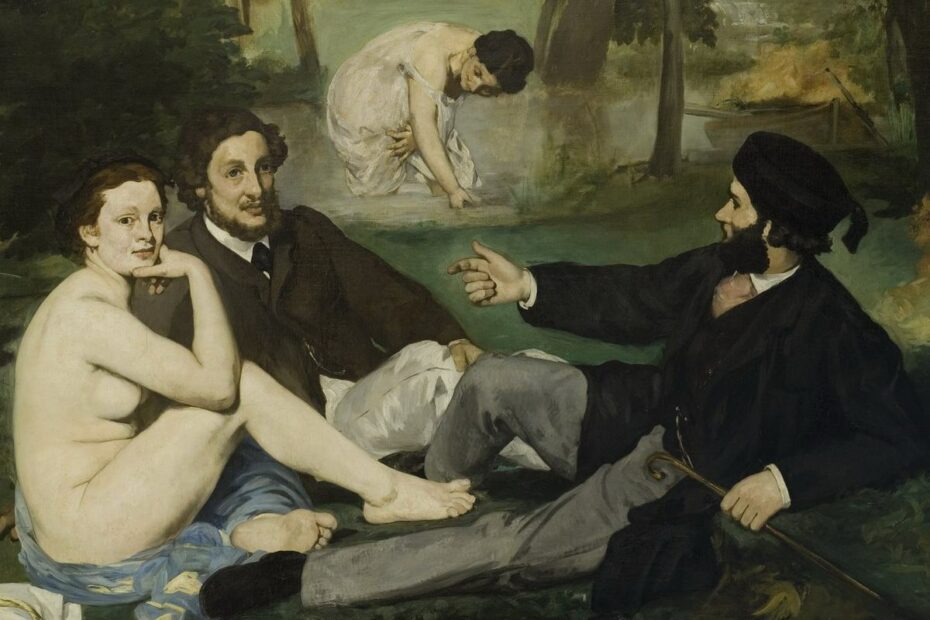
As early as the the 1830s, artists who were rejected by the salon chose to band together and show their refused work at a gallery. Though the Paris Salon had long been a public event, every work had been hand-selected by the Academy. By letting rejected works be seen and judged by the public themselves, the Salon des Refusés opened up a new level of discourse between artist and spectator. Around a decade after the first Salon des Refusés, a group of artists who called themselves the “Anonymous Society of Painters, Sculptors, Printmakers, etc.” held a private show that took the idea of the Salon des Refusés a step further by completely severing any official connection to French artistic power structures. The show gave the group their name – the Impressionists. The movement would perhaps never have been feasible had it not been for Courbet’s Pavilion of Realism and the Salon des Refusés.
The Not Terribly Good Club of Great Britain
Now, if life wasn’t exactly silver spooned to you, there’s always the option of celebrating mediocrity. The “Not Terribly Good Club” was a late 70’s support group for those who fell short of grace and skill. Would you believe the man who started the club was pushed from his place of presidency for being above average? In 1976, at one of the early meetings, Stephen Pile was asked to step down for catching a soup terrine before it hit the floor. The club didn’t last long because Pile also became a successful author of a book on a collection of horrendous failures.
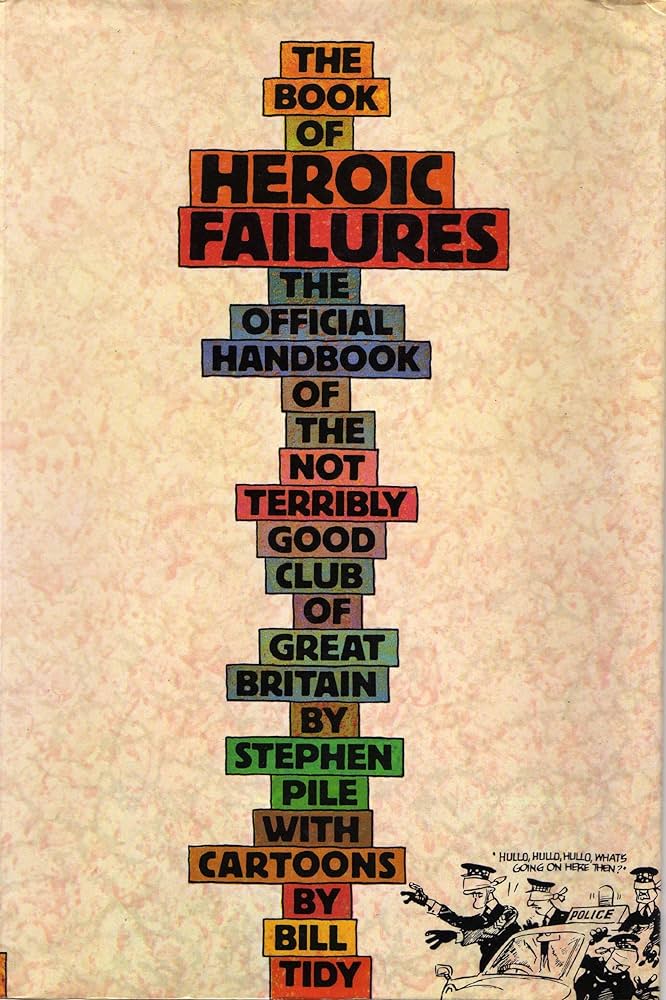
The book of Heroic Failures: The Handbook of the Not Terribly Good Club of Great Britain went viral so to speak – rendering the club a wild success…which wasn’t really the point.
Order of the Pug
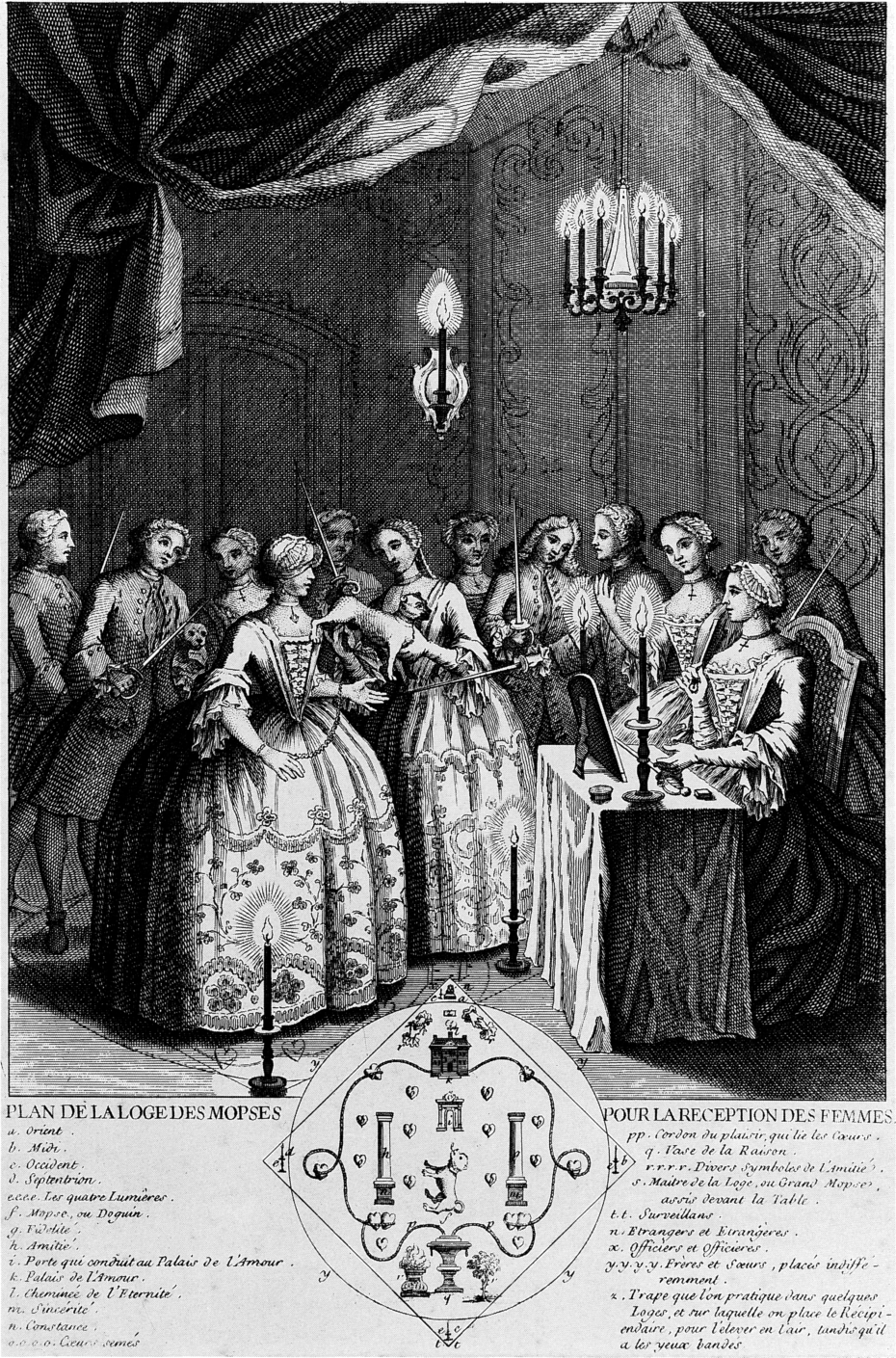
There was one way only for Europe’s intellectual elite to become a member of what is probably history’s oddest Masonic societies: by puckering up to the rear end of a pug as an expression of total devotion. You read correctly; the mid-18th century was filled with pantaloon-clad ladies and gents lining up to become “Mops,” (the German word for pug), the mysterious members of the “Mops-Orden.” In layman’s terms, that’s “Order of the Pug.”
It began in Germany in the 18th century, when Roman Catholics were forbidden to join the Masons by Pope Clement XII, and those that did were excommunicated. Enter the Order of the Pugs, believed to have been founded in 1740 in Bavaria by Clemens August of Wittelsbach. According to the 1745 article that exposed the group, L’ordre des Franc-Macons trahi et le Secret des Mopses rélélé (Franc-Macons betrayed and the Secret of the Mopses reelected), the “Order” was founded by those who couldn’t get in to Pope Clement XII’s Masonic crew. So really, the mops were a troupe of societal misfits.
Initiates were required to wear dog collars, gained entry to meetings by scratching at a door, and were guided in a ceremony in which they circled a room nine times, barked “Memento mori” and kissed the Grand Pug’s bottom to pledge their allegiance. When news broke of the Order in 1745, the society went to trial and was subsequently outlawed a few years later. Although according to German authorities, there were still some practicing Mops in Lyon in 1902. Perhaps it’s worth sniffing around central France for some modern day members.
The Secret Cambridge Club of Rooftop Climbers
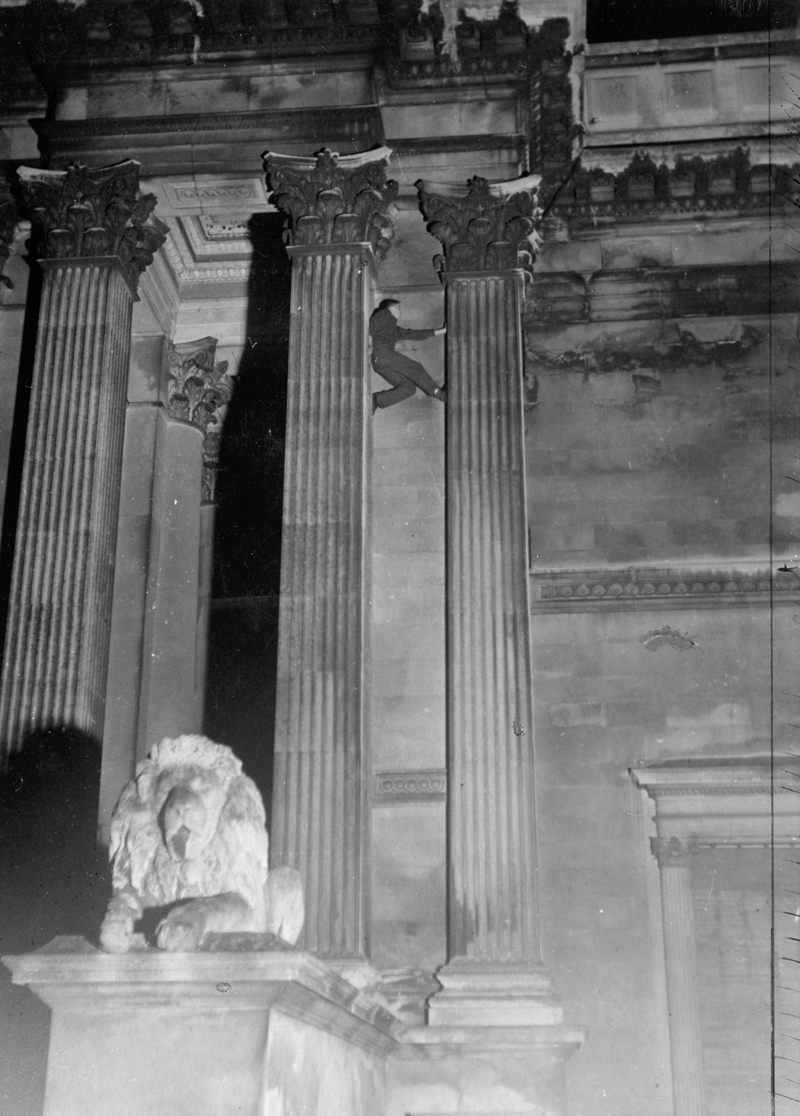
As night fell on Cambridge University in the 1930s, a dapper gang of undergraduate students regularly met in secret to climb up historical buildings, illegally exploring their campus via its rooftops and façades. They were known as the “Night Climbers of Cambridge”, immortalised in a cult guide book on the forbidden practice, anonymously published by the daredevil you see in the photograph above.
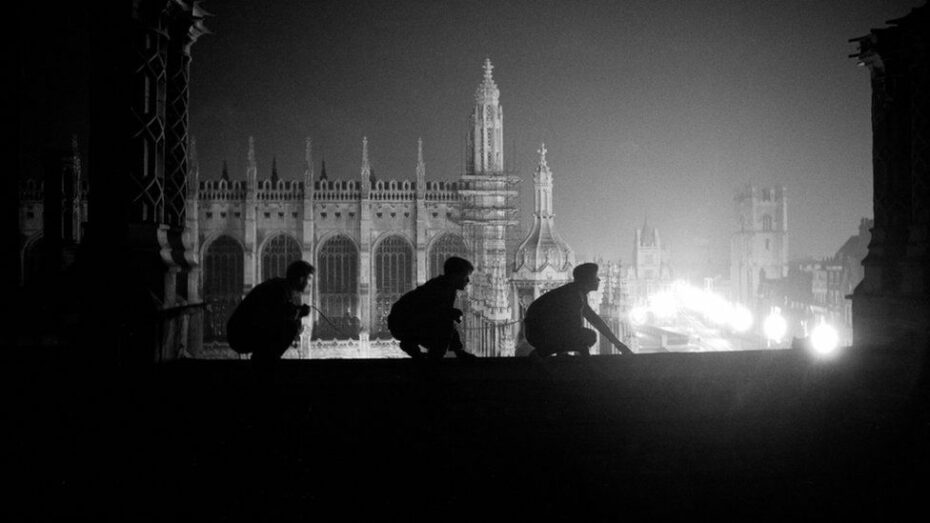
Like all true urban explorers, he had a pseudonym: “Whipplesnaith”, which also served as his pen name for the book that documented the group’s infamous clandestine climbing sessions. While one of the other members of the club was the designated photographer and another in charge of lighting, it was Whipplesnaith, the leader if you will, who was photographed in most of the precarious positions as high as 50 or 60 metres high, without a climbing rope, sometimes wearing a jacket and tie.
If we’ve learned anything today ladies, gentlemen, and all others, it is that boredom can birth the strangest, most interesting, corners of history and the internet – and let’s hope that the varying and bizarre communities of all sorts continue to bless us with their contributions to our amusement.
The Macaroni Club

So, Macaroni – world’s best carb or fashionable dandy? In England, it was once quite a compliment to say someone or something was “macaroni,” it was to say “en vogue,” and “chic.” The term was dubbed for aristocratic boys who returned home from their tours of Europe, having found a taste for the finer things in life like beautiful clothes and…macaroni. Pasta from Italy was a delicacy on the rise in these times and to be associated meant you were worldly and interesting and thus The Macaroni Club was born.
Initially seen as alternative and odd, rather than aggressively anti-establishment, their distinctive fashion sense would be enthusiastically tolerated, entertained, even enjoyed by an amused public. These well-travelled, dapper, dainty and sensitive aristocrats sought to build a distinctive image of themselves and their circle through unorthodox behaviour, dress and attitude. Late 18th Century Britain was awash with societies and clubs, attended by aristocrats who loved gambling, foreign fashions and celebrated the height of macaroni fashion. Estates were won and lost at the card-tables and promiscuous behaviour was rampant behind the veils of Georgian etiquette. Entirely for display, part male, part female, this was the world of the decorated peacock, the 18th century drag artist meets rock star, strutting his stuff on the catwalk of life. Read more about them here.
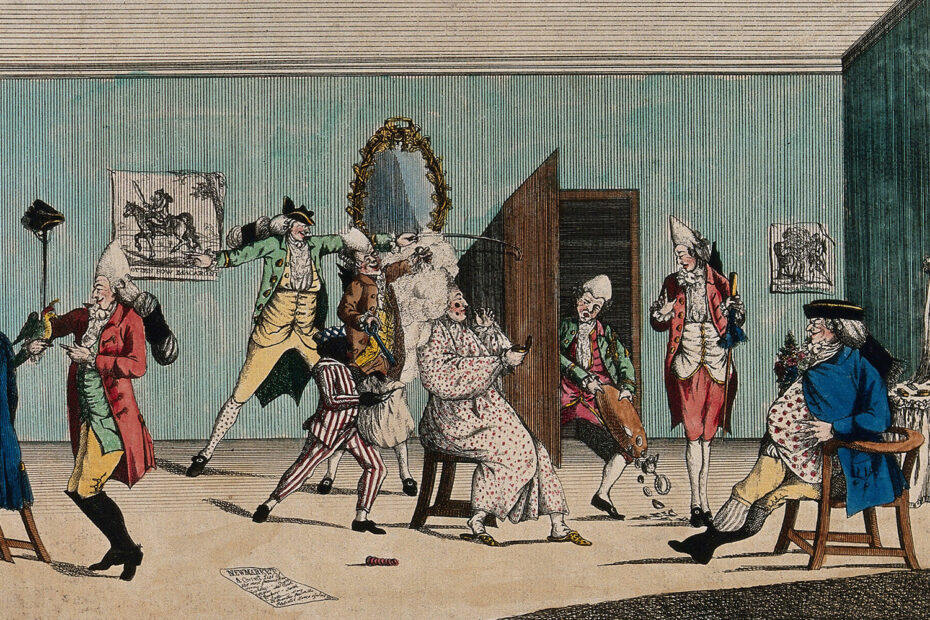
Hellfire Clubs
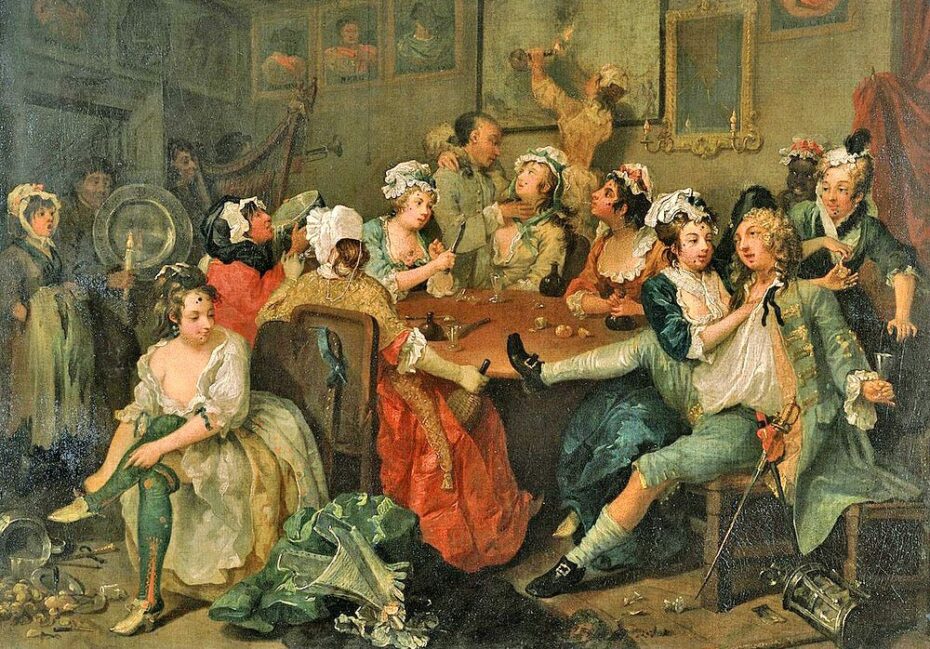
If university isn’t really your place and you’re not feeling so philanthropic, but also happen to be an 18th century Englishman of status, perhaps the Hellfire Clubs could suit your fancy. If you were ‘a person of quality” so to speak, such as a politician or duke, you might take pleasure in making fun of morality and good old fashioned religious values. With men and women as equals, the group mocked the social order of the day, indulged in excessive drinking, gambling, orgiastic behavior, held mock religious ceremonies, dressed as characters in the bible, and pretended to worship the devil. One of the famous locations associated with the Hellfire Club in England was the Medmenham Abbey, a former abbey along the River Thames that Dashwood converted into a meeting place for the club. It was rumored that bizarre and libertine ceremonies took place there. It’s said that Ben Franklin joined but any verifiable records of the club are few and far between.
The Halfway to Hell Club
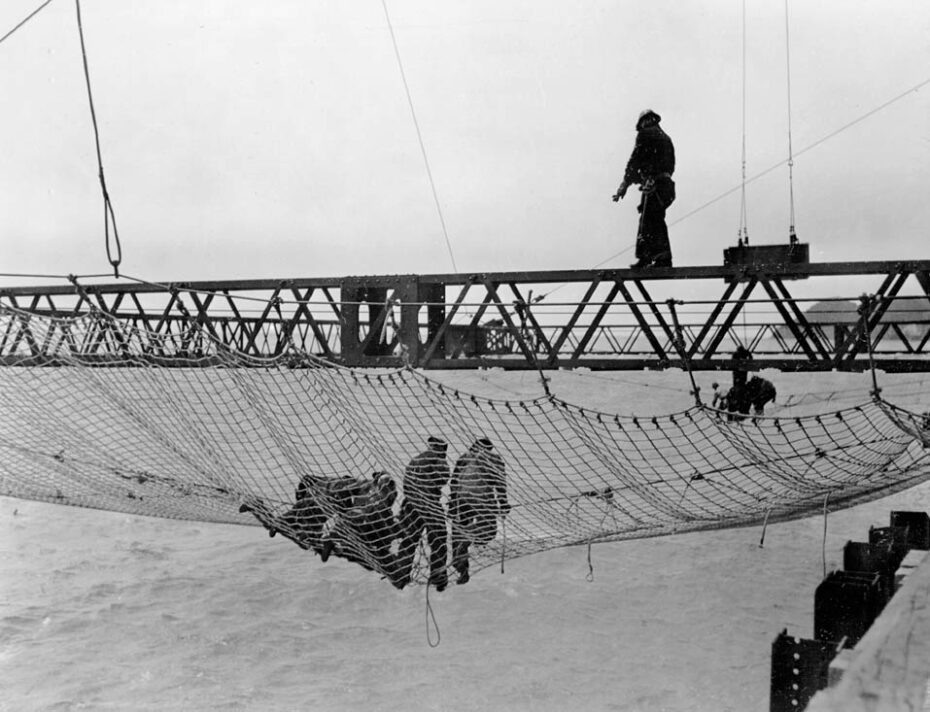
Sometimes, exclusivity comes from falling off a bridge and living to tell the tale – but not just any bridge. The members of the “Halfway to Hell Club” are those who fell from the bones of the Golden Gate Bridge during its construction site, but were luckily saved by the nets below. One of the very first members of the club, Al Zampa, was also one of its last surviving members when he died in 2000 at 95 years old. Zampa said that when a man falls from the bridge, it’s like “he’s gone to hell,” but the ones who fell into the nets only went halfway, thus this long lasting namesake. Zampa was a special case, recalling that he wasn’t scared of dying when he fell, as he trusted the nets below, but as fate would have it, he fell on a net which was poorly constructed. He hit the ground and lived. It’s said that there is no official list of survivors today but an estimated 19 men fell halfway to hell and about 10 member’s names are remembered.
A Club for Impoverished French Aristocrats
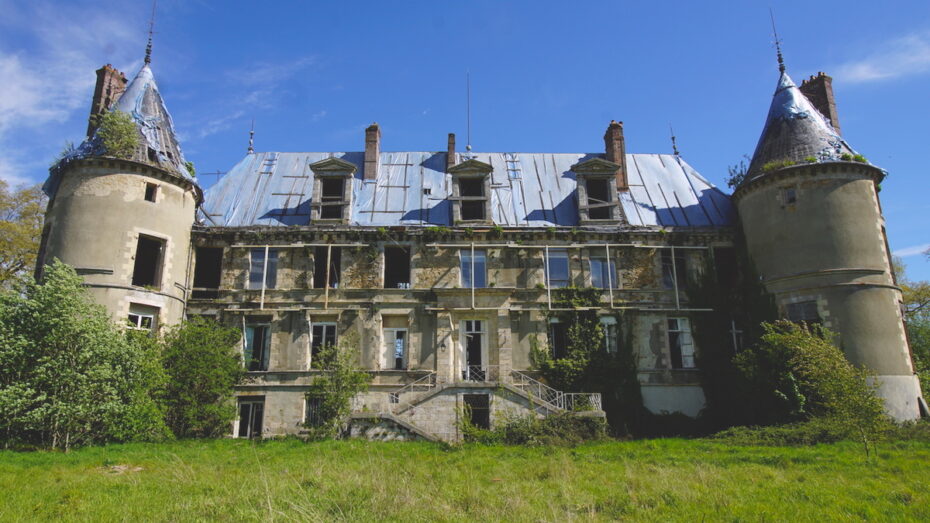
Are you a down and out aristocrat? Created in the 1930’s after two nobles noticed the porter carrying their baggage in the railway station was a fellow aristocrat, the ANF or Association for the Mutual Assistance of the French Nobility, is a Club for Impoverished French Aristocrats. For those who have lost their fortune to a money pit of a chateau, you have the opportunity to be reinstated and welcomed into the bourgeoisie. If lineage can be proven, you could be welcomed back graciously among the wealthiest and well to do of France.
Seven Society
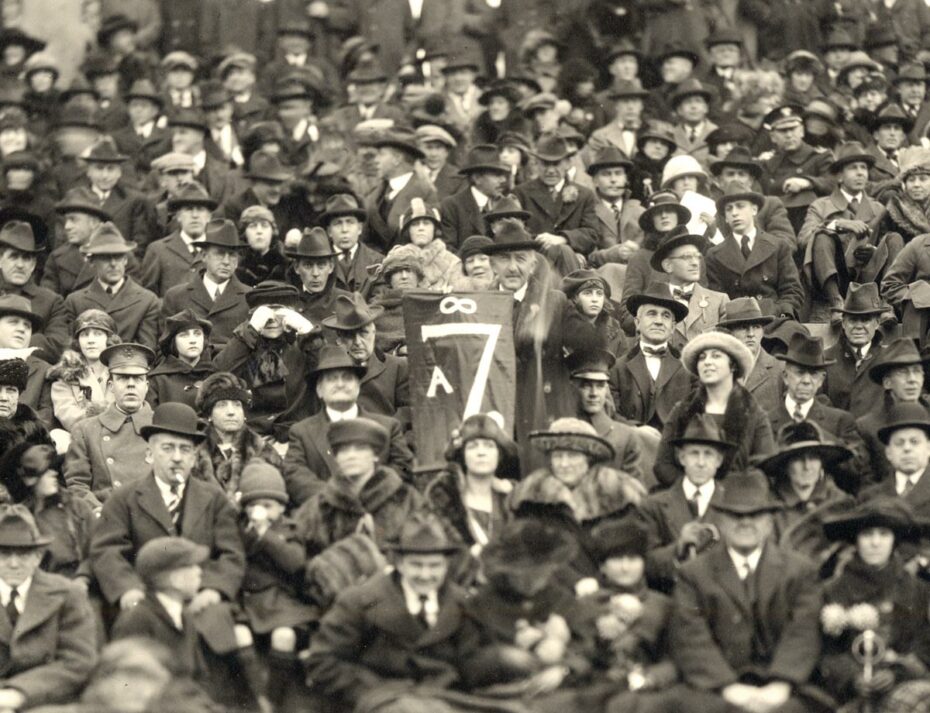
Also known as “The Secret Seven”, the mysterious Seven Club has no definitive start date or list of current membership and members are only revealed after their death, when a wreath of black magnolias in the shape of a “7” is placed at the gravesite, accompanied by seven distinct chimes of the university’s bell tower. It allegedly started with a game of cards; eight members of the game were invited and only seven showed. The rest has been left for us to fill in the blanks. The group, however secretive, is a philanthropic community through and through, making donations which always are sure to include 7’s, and always paid anonymously. They are known to wear robes and masks to conceal their identities when making appearances on campus and members communicate through notes, messages, and symbols left at the scenes of their philanthropic gestures, often signed with the number “7” or the society’s logo. For inquiries, be sure to leave a note on the statue of Thomas Jefferson in the historic rotunda on campus. Debates are still out if you should leave it in the crook of his arm or at the base, but whatever the matter, I’m sure they’ll find it.
The Georgian Farting Club
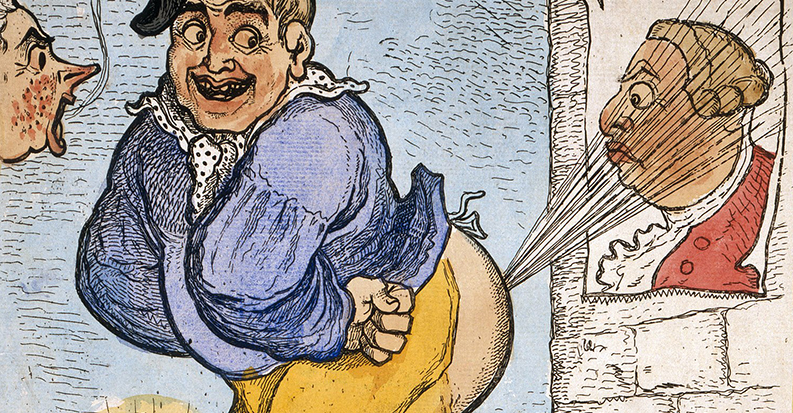
While some clubs may seem heroic and historical, whimsical, or out of control – others are, well … best described as a load of hot air! In Georgian England, there once existed a farting club, which likely came to be because of an 18th century Anglo-Irish satirist, who had published a pamphlet on the explanation of the benefits of farting. The secret meetings were allegedly held weekly and members tailored their diets to create the most impressively odoriferous farts amongst themselves. Their diets, heavy in cabbage, and their stomachs supposedly flush from overeating, led to sickness and death which eventually led to the club’s unfortunate end.
The Just Missed it Club
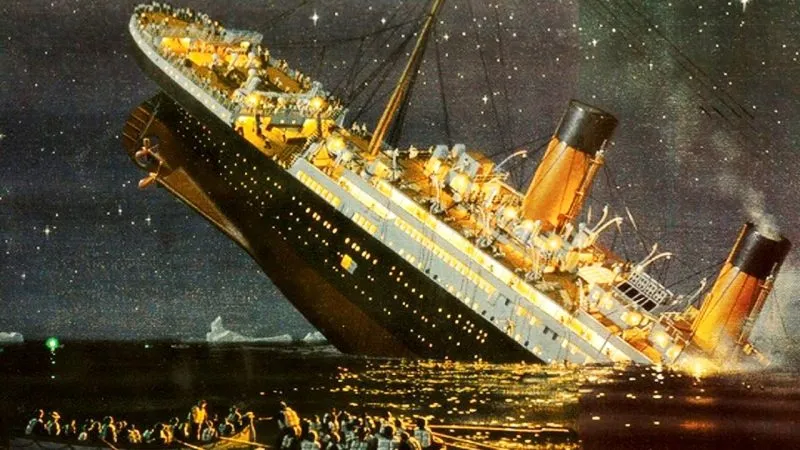
If you were a maritime traveller in the early 20th century, the “Just Missed it Club” was a one club you’d be most relieved to be included in. Formed in the weeks following the Titanic sinking, over 118,000 people joined the club claiming they had missed or canceled their trip at the last moment. Some of these survivors included Milton Snavely Hershey, as in the man behind the great American chocolate bar, J.P Morgan, an original wolf of Wall Street, and Alfred Vanderbilt. The stories of these individuals were often recounted in newspapers, and they were sometimes interviewed or sought after for their firsthand accounts of how they narrowly avoided being on the Titanic. Their tales of serendipity or chance decisions that kept them off the ship became a subject of fascination for the public.
Fat Men’s Clubs
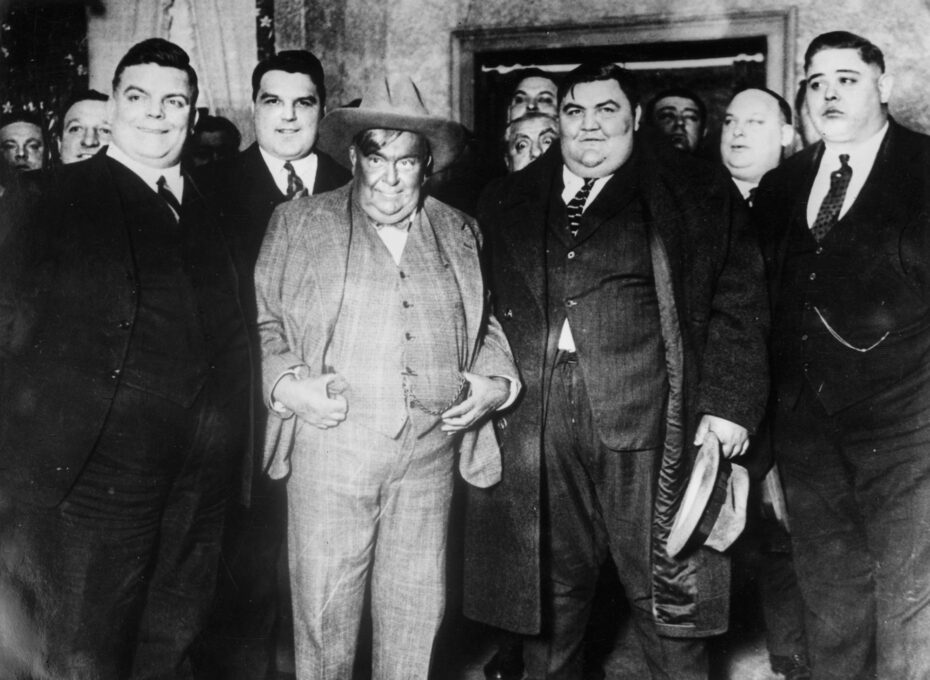
Onwards we go to the club exclusively for gentlemen over the 200 lb mark, a celebration and society of self-proclaimed fat men. It’s 1903 in a cozy tavern somewhere in Vermont, where a group of men decided, “We’re fat and making the most of it,” and that they’ve “got to be good natured because [they] can’t fight and [they] can’t run.” The requirements for the biannual meetings were as follows: $1 in dues, a password, a handshake, and a respectable weight minimum of 200lbs. All meetings were advertised in advance for members to begin packing on extra pounds beforehand, should they have lost any weight since the previous gathering. This New England club was not the first of its kind, even if it was one of the most successful with up to 10,000 members. These clubs were in fact, held and hosted all over the nation in the late 19th and early 20th centuries, as a means of networking, and celebrating the outdated idea that a little extra cushion implied you had a little extra wealth. Over time, societal attitudes towards weight and health shifted, and the Fat Men’s Club gradually faded away. As awareness about the health implications of obesity increased, the club’s approach to celebrating larger body sizes became less socially acceptable.
The 33 Club
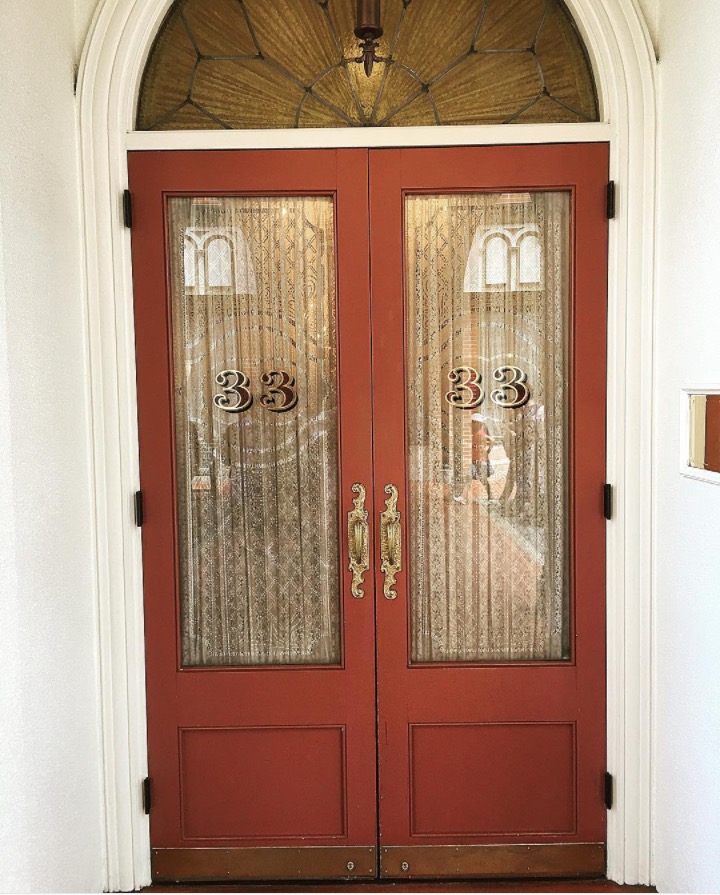
Walt Disney was known for placing many hidden gems inside his theme parks. From his own secret apartment to hidden mickeys, Disney fanatics live to discover these little treasures. Club 33, tucked away inside Disneyland California, is perhaps the most hidden of all. Club 33 was built speakeasy style, with only a small “33” address plate to mark its entrance. Disney created the secret venue, located in New Orleans square, as an escape for celebrities, socialites, politicians, and high paying investors. Unfortunately, Walt passed away just five months prior to its opening and was never able to see it.
For many years, only members knew of Club 33’s existence, but recently, members and guests have begun to share their experiences online. One member extensively documents his experiences on instagram. The club has seen the likes of many A-listers and even some US Presidents. Some of the most well-known “supposed” members include Elton John, Christina Aguilera, Elizabeth Taylor, and Tom Hanks. If you are willing to pony up and pay the big bucks to become a member, sign-up soon, as the wait list can delay entry for up to a year.
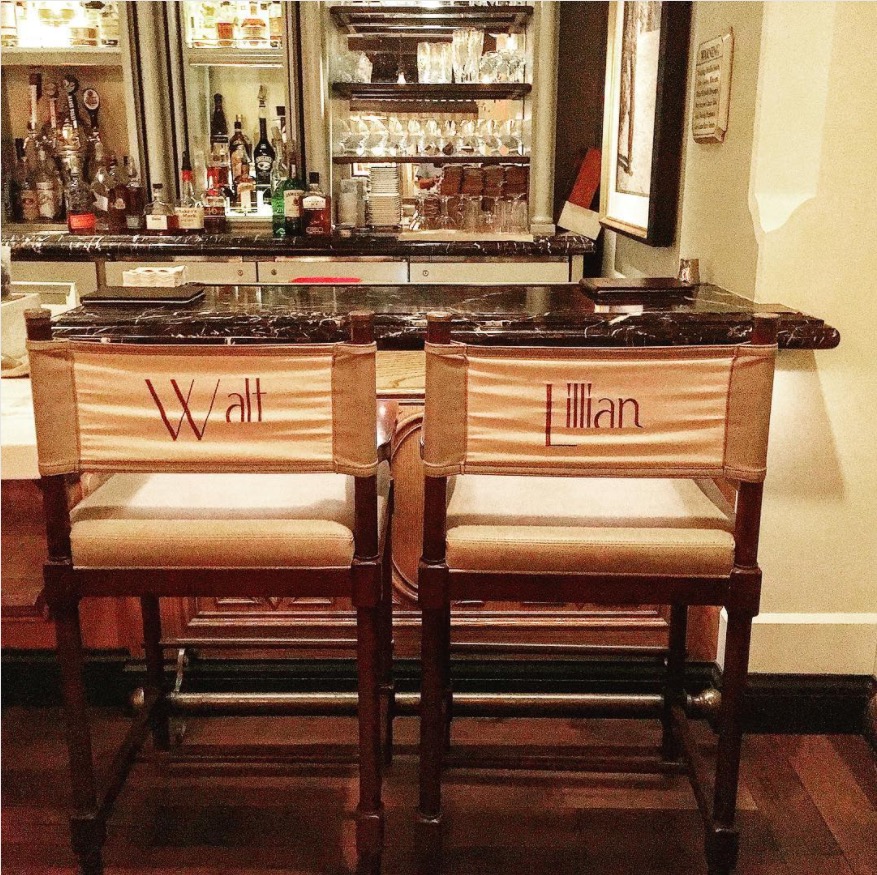
For a premium fee, members today may dine at the only establishment which serves liquor in the park. Members take the red carpeted grand staircase or the French lift, which Disney had replicated to match one he fell in love with in Paris, to be lead into the first main bar area for a cocktail. They’ll sip drinks around legendary film props and eat gourmet meals in the main dining room, complete with Cinderella empire blue and gold curtains. Members pay a fee of $25,000 to join the first-class crowd invited to dine at Club 33 and $12,000 per year after that. However, even in the hefty membership fee, dinner is not included. You can apply for your membership to Club 33, but don’t expect to hear back soon. The waiting list is long, and with a price tag of $10,000 per year, you may want to start saving now.
The Ugly Club
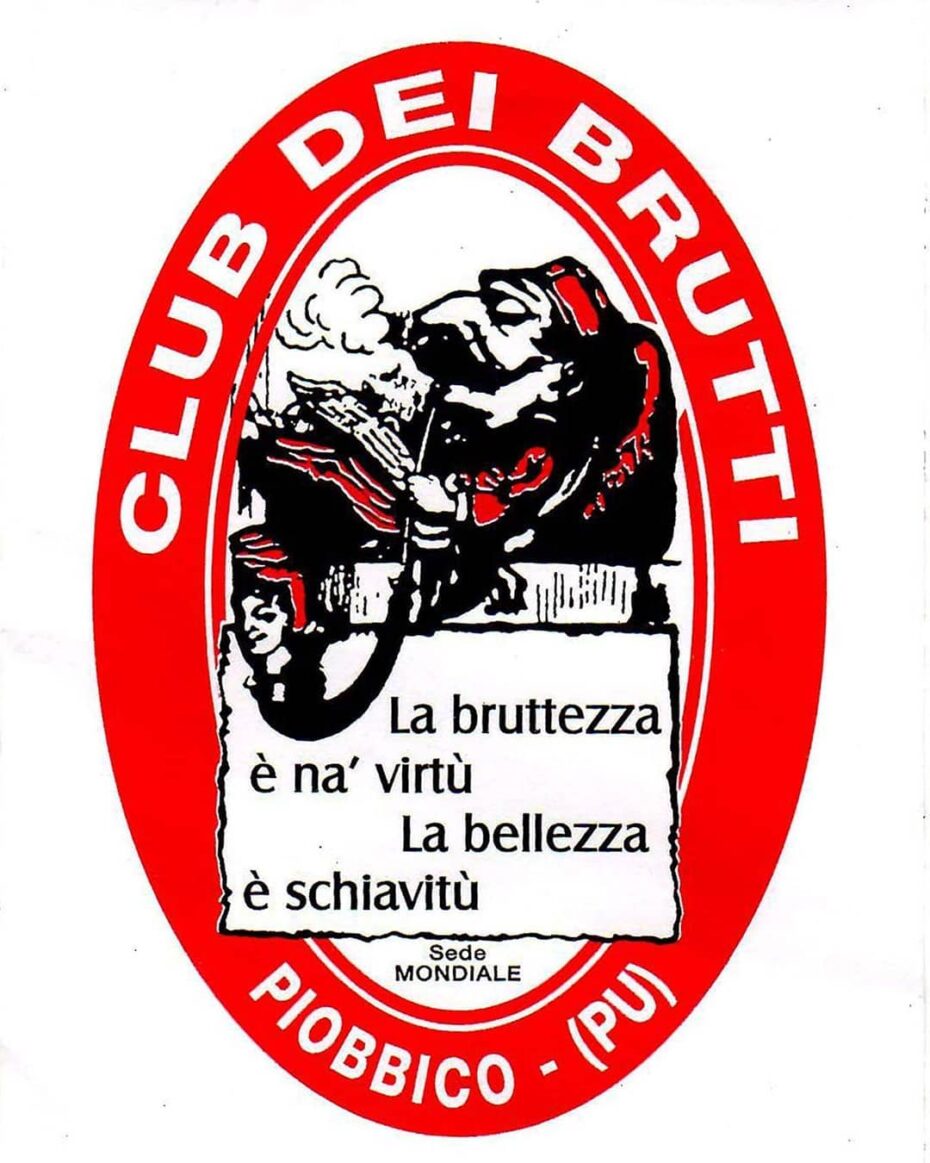
Being human at any time can be a challenge, in which we all wish to be seen and heard equally – so why not fight for that visibility? That’s what some 30,000 people are doing in Club dei Brutti or The World Association of Ugly People. For 140 years the tiny village of Piobiccio has been named the capital for “ugly people.” The villagers and members of the club believe “a person is what he is and not what he looks like.” Today, there are 25 global chapters, celebrating the same motto. Strangely enough, Club dei Brutti began as a dating service for single women of the town. As it tends to come up, the locals found it important to stress the humanity of all people and that no one should be judged for how they look, but on the basis of their character. The beauty of the club is that anyone can join, however, and with some irony, those who wish to apply will be judged by senior members on their “ugliness.” The point, at the end of the day, is not about what members look like, but to uplift and empower those who are so often left out of the conversation about conventional beauty standards. On the first Sunday of September, all are welcomed to gather for the Festival of the Ugly where the president of the club is to be elected each year. But the Club dei Brutti is not the first of its kind…
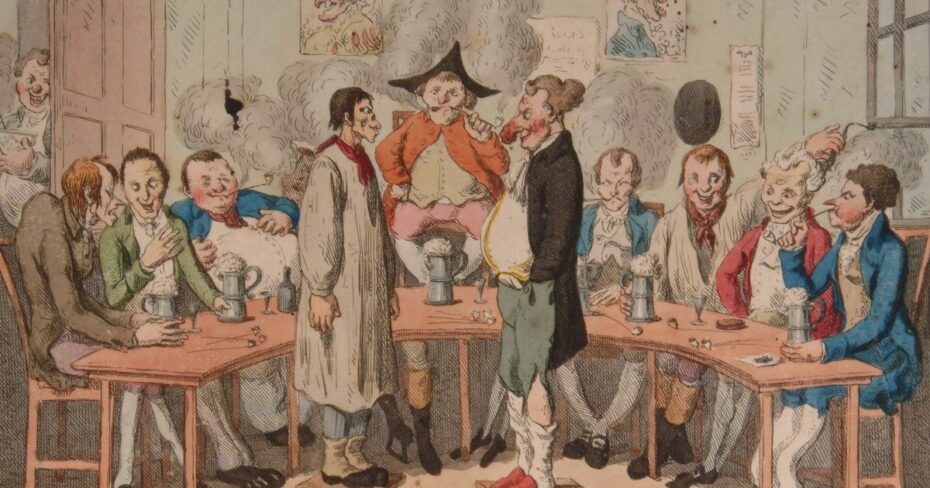
In 1887, Mr. Howell, a second hand book dealer, came across the minutes of a club which had met some century and half before: “The Most Honourable and Facetious Society of Ugly Faces”.
Some rules of the club included:
- No person whatsoever shall be admitted… that is not a man of honour and a facetious disposition.
- That a large mouth, thin jaws, blubber lips, little goggling or squinting eyes shall be esteemed considerable qualifications in a candidate.
- That a particular regard shall be had for the prominence of a candidates nose, and the length of his chin.
- That a large carbuncle, potato nose [shall] be esteemed the most honourable of any.
New members were to be voted on by the majority of other members, with the president having the casting vote.
Qualifications of individual members included Franics Gildart with his “large pancake face,” James Ashton with his “nose like a shuffled nose shark,” Mathew Strong with his “thoroughly begrimed” teeth, and Robert Fillingham who was “in every respect extremely well qualified.”
Bohemian Grove
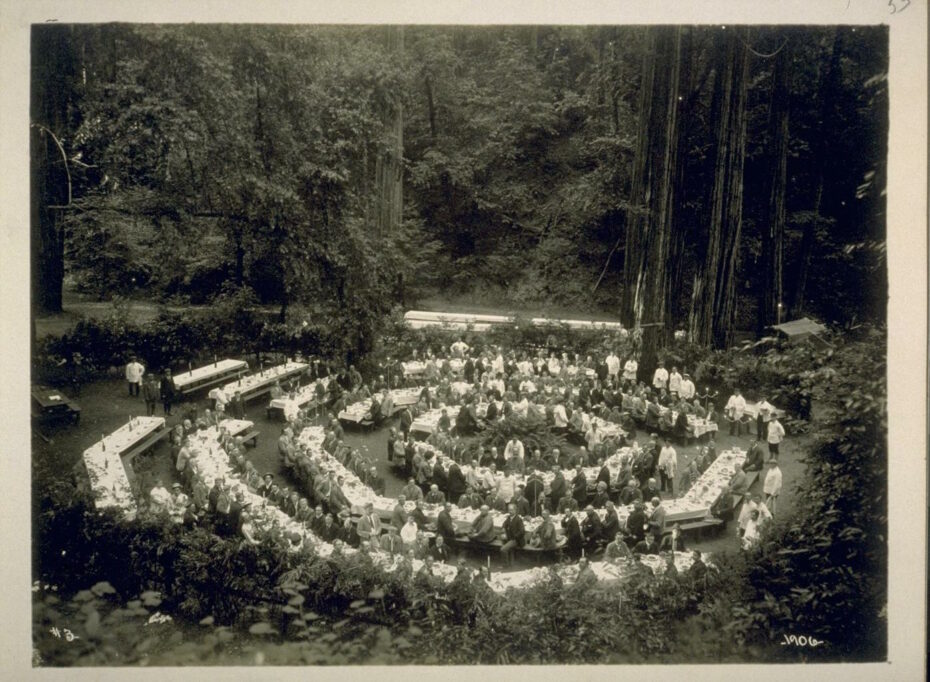
For two weeks every summer, Bohemian Grove, the 2,700 acre secured private camp in the Ancient Redwood Forest of Northern California, plays host to some of the most powerful men in the world. Every republican U.S. president since 1923 has been a member of club, including Eisenhower, Nixon, Reagan, and the Bush family maintains a strong involvement to this day. The top secret operation behind the development of the atomic bomb, known as the Manhattan Project, was first planned at the Grove in 1942, and it’s said to have played a key role in major political and business deals since it was founded in the late 1800s. This place is a conspiracy theorist’s dream come true. But it’s also a summer camp in the middle of a remote forest where the global elite can take off their ties and behave like a bunch of lost boys who’ve tied up their camp counsellor; free to run wild and break all the rules…
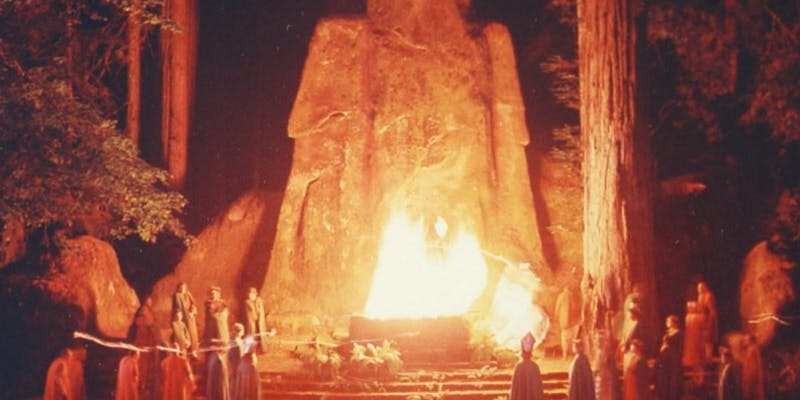
The meeting is not far from that of a cult, complete with a sacrifice to a giant owl statue and paganistic rituals. What began as a celebration by the bohemians grew into an annual party that required funding. One patron with deep pockets invited his friend and that friend invited his friends – giving birth to an old boys club with some interesting traditions.
Beggar’s Benison (an 18th Century Masturbation Society)
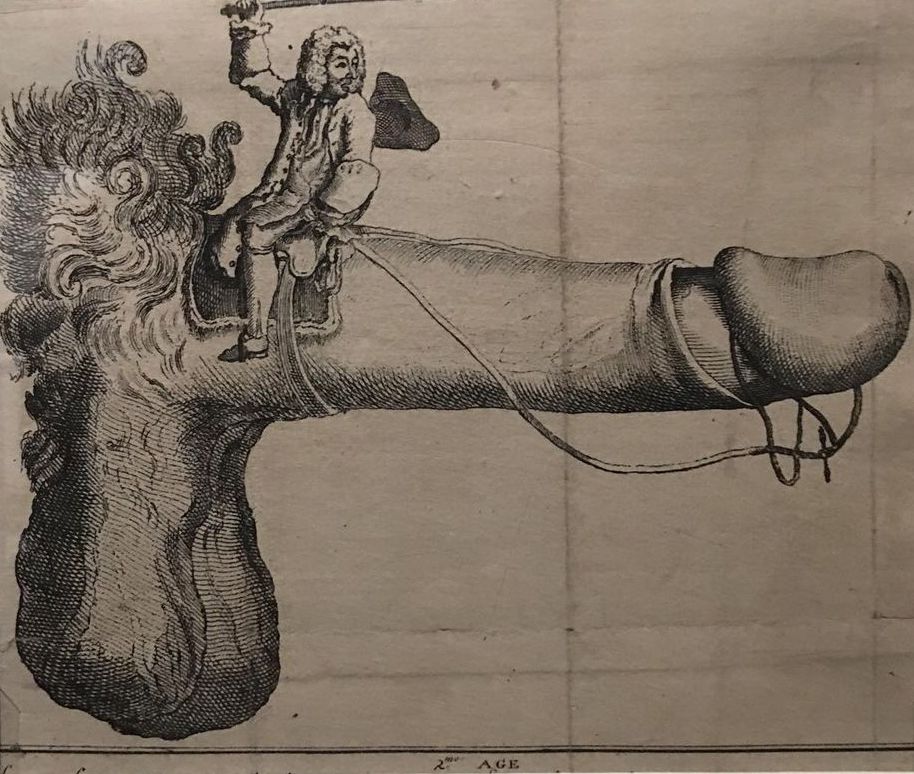
The Beggar’s Benison or The Beggar’s Blessing is by far the raunchiest of history’s oddball get togethers. In the 18th century, the picture-perfect fishing village of Anstruther in Scotland became home to the most notorious sex society of the day, also known as The Beggar’s Blessing. Membership was by invitation and required the undertaking of a very formal initiation ceremony in front of the other members. Two naked ‘helpers’, or young women would assist the invited candidate to a small ‘closet’ where in private they would sexually arouse him. In an excited state, he was then escorted into the full gathering where the ‘sovereign’ would instruct him to lay his manhood on the ‘testing platter’, an erotically-engraved silvered plate. After a very formal penis-to-penis touching ritual with the other knights he was required to scatter his seed into the decorated testing plate.
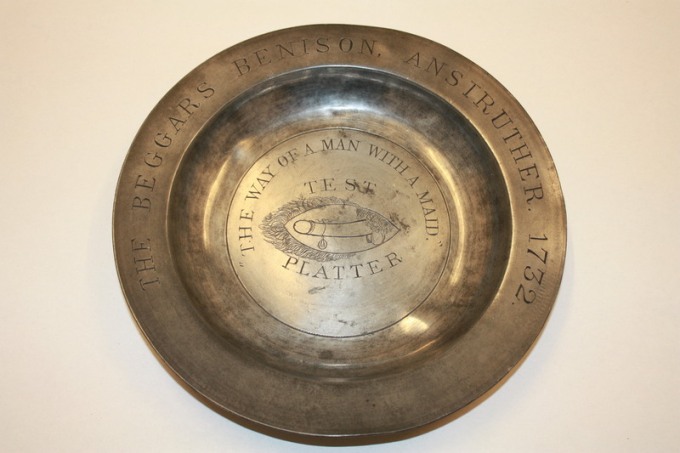
Upon successful completion he was rewarded with copious quantities of port from an lewdly-engraved, elaborate glass chalice. The final trial required him to read aloud passages from the club’s vast collection of erotic literature. The club’s special ceremonial crockery and silverware were designed to titillate: phallic-shaped drinking vessels, engraved plates and cast medallions all served to intensify the experience. One record of an initiation reads, ‘24 met, 3 tested and enrolled. All frigged.’
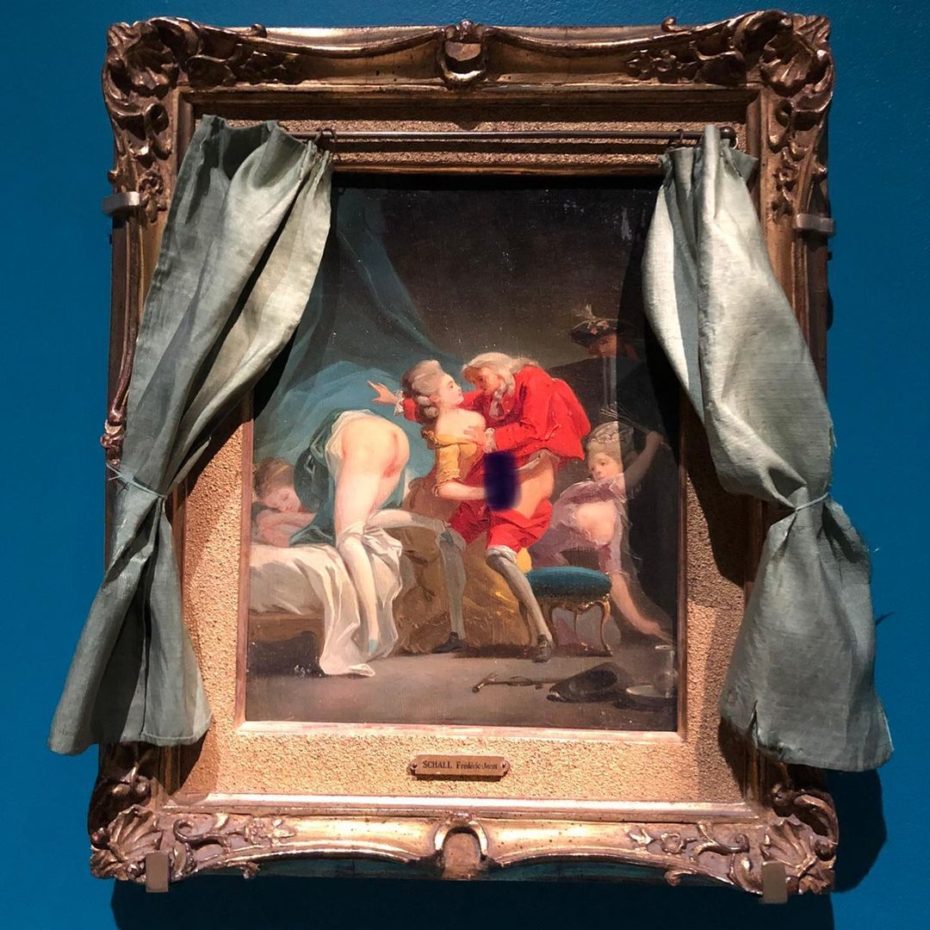
Sex clubs for all tastes were abundant in 18th century Britain. The Beggar’s Benison was no exception in offering all kinds of celebrations of the pleasures of the flesh to its members. Across Britain there were clubs for all wants of sexual desires, for men and for women, some exclusive to each gender and others mixed. There were the bawdy drunken clubs and there were the ‘enlightened’, intellectual clubs devoted to the erotic literature of the day.
At any one time, there were never more than 32 members. From the local bishop, earls and lairds (landowners), church minster and bourgeois merchants to the local surgeon and town councillors, this was a society within a society. Soirées were held in grand rooms of fine buildings, with lavish feasts, exquisite wines and port served in abundance. The evenings would be laced with sexual ceremonies and erotic readings, obscene songs were sung and live pornographic art ateliers were hosted with nude local girls (or the occasional willing wife as rumour had it).
The president of the Beggar’s Benison club, was titled ‘The Sovereign’, his ‘crown’ an exotic fancy wig said to have been woven from the pubic hair of one of King Charles II’s mistresses. Like all such club icons, the wig had its obligatory history: King Charles II had donated it following visits to the county of Fife’s parties and fairs in the 17th century. Over the years the upkeep of the wig had required the members to supply ‘curls’ from their own mistresses. Having endured for over 100 years and initiated 500 members and even sprouted branches in Edinburgh and allegedly as far as St Petersburg in Russia, the club was formally wound up in 1836. Although some of the records were destroyed, copies had been made and many of the original artefacts, including the erotic seals, the sashes of office, the phallic-shaped goblets, the explicitly-illustrated medals, business documents and pornographic drawings, all found their way to safekeeping at the prestigious University of St Andrews.
Club of the Hashish-Eaters

It may come as no surprise that old boys clubs were the ones having the most fun, case in point: the Club des Hashischins (“Club of the Hashish-Eaters”), a club for the Parisian creatives who used to get together and smoke pot. The likes of Baudelaire and Alexander Dumas were passing the pipe as all things eastern were in at the time. The club was inspired by a psychiatrist who would take patients to places like Turkey and India where hashish was available as a means to help alleviate the struggles of mental health. When he began passing it around to test the drug’s abilities, hash made its way through the circles of some of our greatest artists.




